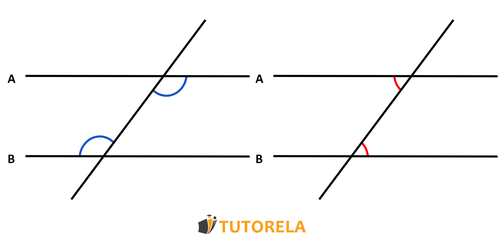Alternate angles
Definition:
Alternate angles are on opposite sides of the transversal that intersects two parallel lines and are not on the same side of the parallel lines to which they belong.
Alternate angles are equal.
The following sketch illustrates two pairs of alternate angles, one is painted red and the other blue.

Identifying Alternate Angles:
There are two types of alternate angles: alternate interior (inside the parallel lines) and alternate exterior (outside the parallel lines). These angles are always equal when the lines are parallel.
The Significance of Parallel Lines:
For alternate angles to be congruent, the lines must be parallel. Recognizing this can help in solving various geometric problems and proofs, as it provides essential information about the relationships between lines and angles.
Other Angles:
In addition to alternate angles, several other angle relationships occur when a transversal crosses parallel lines.
- Adjacent angles: Two angles that share a common side and vertex.
- Vertically opposite angles: Angles directly across from each other when two lines intersect, always equal.
- Collateral angles: Also known as co-interior angles, these sum to 180°.
- Corresponding angles: Angles in matching corners when a transversal crosses two lines, and are equal.